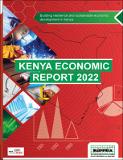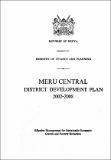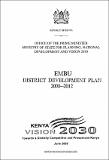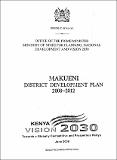| dc.description.abstract | Kenya’s economy rebounded strongly
in 2021 amid the COVID-19 pandemic
disruptions, high global fuel prices and
low precipitation experienced in the
country during the year. The economy grew by
7.5 per cent in 2021 compared to a contraction
of 0.3 per cent in 2020. The rebound followed
the reopening of the economy, roll out of
COVID-19 vaccination and reversal of COVD-19
tax measures that boosted revenues to support
spending. Strong recoveries were recorded in
services and industry while agriculture recorded
a contraction. Agriculture, forestry, and fishing
activities shrunk by 0.2 per cent due to dry weather
conditions while all services activities recorded
strong growth. The services activities that showed
strong performance include accommodation
and food services (52.5%), education (21.4%),
arts, entertainment, and recreation (13.7%),
financial and insurance (12.5%), information
and communication (8.8%), wholesale and
retail trade (7.9%) and transport and storage
(7.2%). Industrial activities also recorded growth,
with mining and quarrying growing by 18.1 per
cent, manufacturing by 6.9 per cent, electricity
supply by 4.4 per cent, water supply, sewerage,
and waste management by 6.4 per cent, and
construction by 6.6 per cent. The macroeconomic
environment witnessed increased consumer
prices in 2021; however, overall inflation remained
within the Government’s target band. The Central
Bank of Kenya continued implementing monetary
accommodation to support growth while lending
rates were higher in 2021 compared to 2020. The continued depreciation of the exchange rate
to dollar given the global market developments
put pressure on prices and cost of external public
debt. Noteworthy, revenues rebounded strongly
in the first half of 2021/22, with virtually all tax
heads recording above target collections. Total
revenue inclusive of grants exceeded the target
by Ksh 28.6 billion while improved growth was posted in Pay as You Earn (PAYE), Value Added
Tax (VAT) imports, excise duty, appropriations-inaid,
and corporate income taxes. These resulted
into narrowing of fiscal deficit in the first half of
the year. | en |




